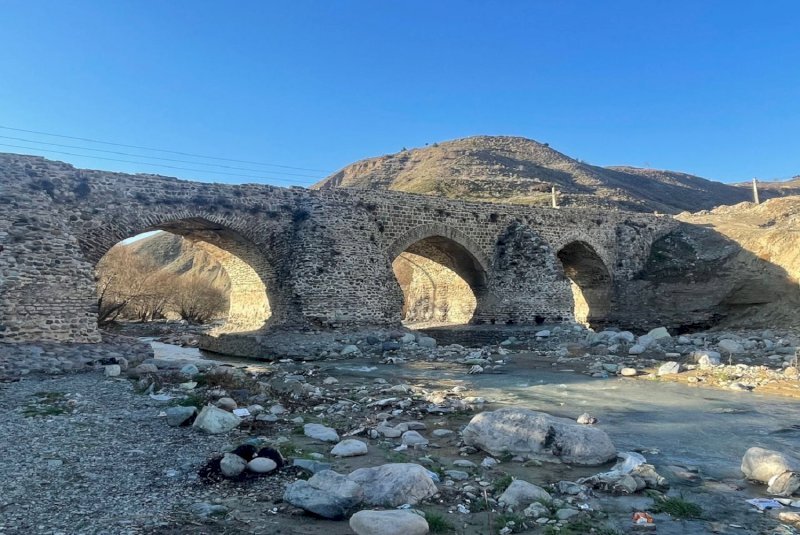INSUBCONTINENT EXCLUSIVE:
said.Various sections of the bridge including its deck, pillar, and foundation are being restored and reinforced under the supervision of
cultural heritage experts, Somayyeh Khakpur explained on Monday.The restoration project is planned to be completed within a month, the
official added.The historical structure has been inscribed on the national heritage list.An arch bridge carries loads primarily by
compression, which exerts on the foundation both vertical and horizontal forces
Arch foundations must therefore prevent both vertical settling and horizontal sliding
Despite the more complicated foundation design, the structure itself normally requires less material than a beam bridge of the same
span.Arch bridges can be classified into deck arch bridges (featuring arches below the deck) and through arch bridges (those with arches
above the deck, generally tied arches)
In all arch bridges, the structural difficulty can be found in the minimization of the misalignment of the arch axis and the line of thrust,
as well as a sufficient bending and buckling resistance
General design recommendations focus principally on the arch-to-span ratio, the arch and deck slenderness, and the number of hangers or
piers.Recent innovative arch bridges include high-speed railway (HSR) bridges, concrete-filled steel tubular and precast concrete arches,
high-performance concrete or ultra-high performance concrete arches, and steel-concrete composite arches, and feature innovative erection
methods, reduction of the arch's self-weight, and new materials for arches, hangers, and ties.The first time Tehran is mentioned in
historical accounts is in an 11th-century chronicle in which it is described as a small village north of Ray.Ray, in which signs of
It became the capital city of the Seljuk Empire in the 11th century but later declined with factional strife between different neighborhoods
and the Mongol invasion of 1220.Tehran has many to offer its visitors including Golestan Palace, Grand Bazaar, Treasury of National Jewels,
National Museum of Iran, Glass - Ceramic Museum, Masoudieh Palace, Sarkis Cathedral, Tehran Museum of Contemporary Art, and Carpet Museum of
Iran, to name a few.Seljuk, also spelled, Seljuq, was a ruling military family of the Oguz (Ghuzz) Turkic tribes that invaded southwestern
Asia in the 11th century and eventually founded an empire that included Mesopotamia, Syria, Palestine, and most of Iran

